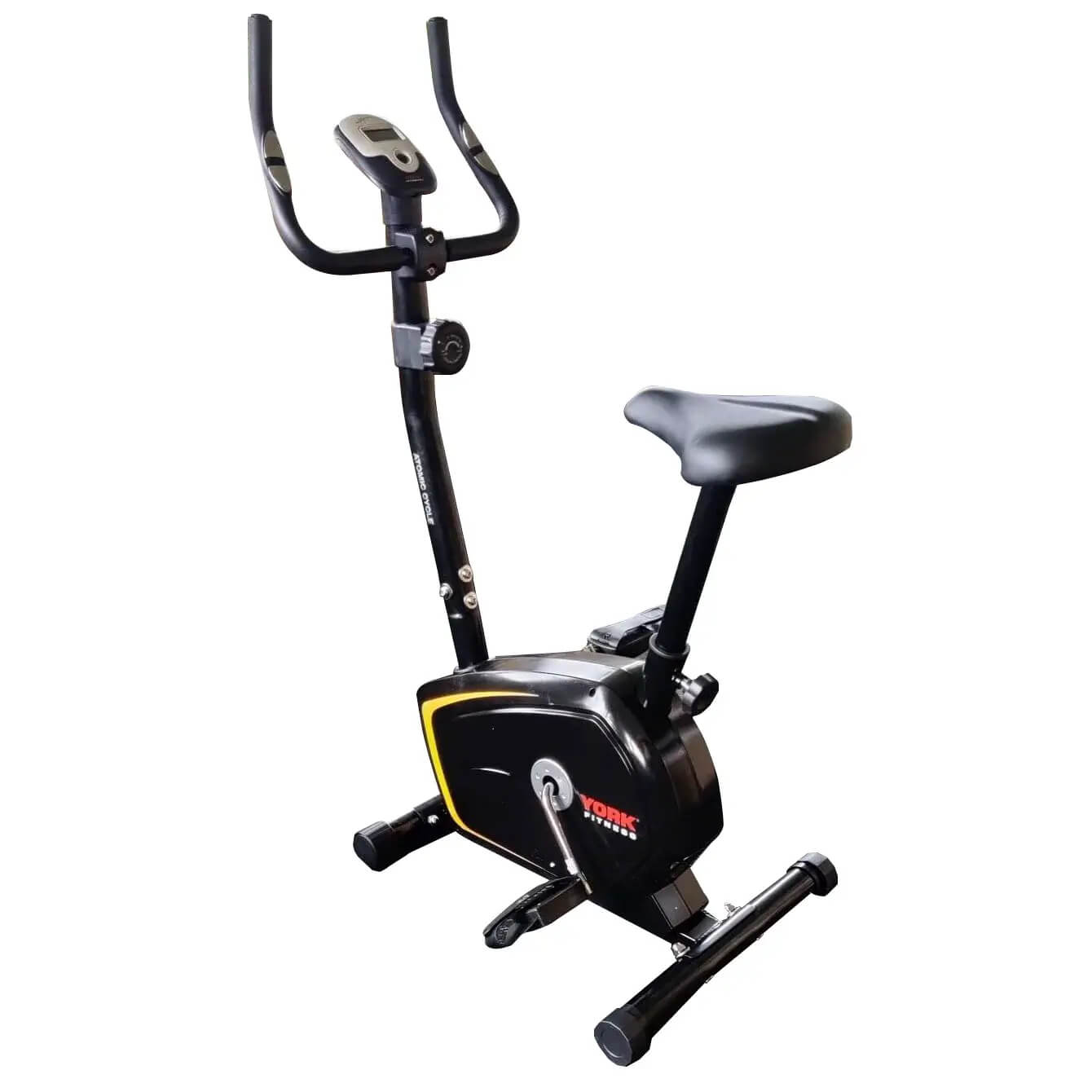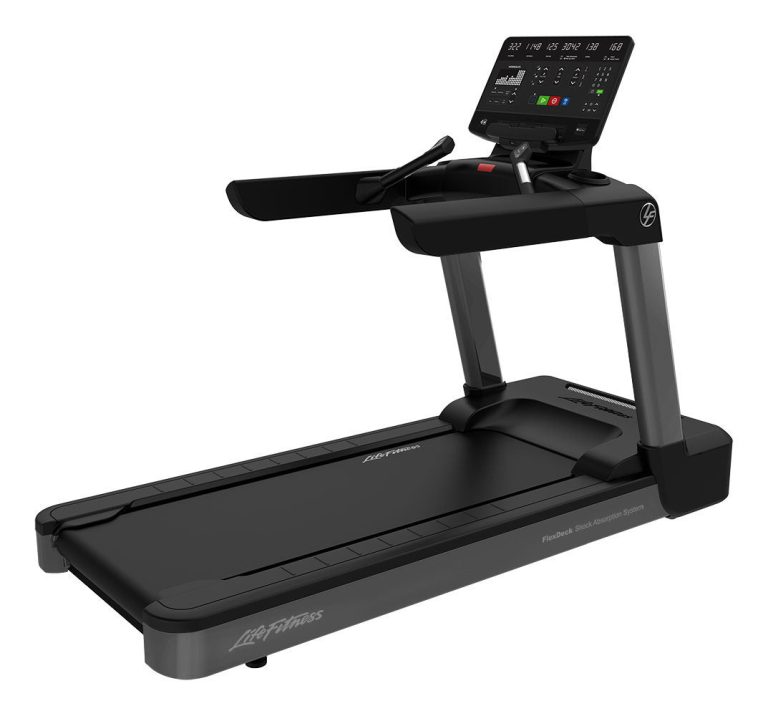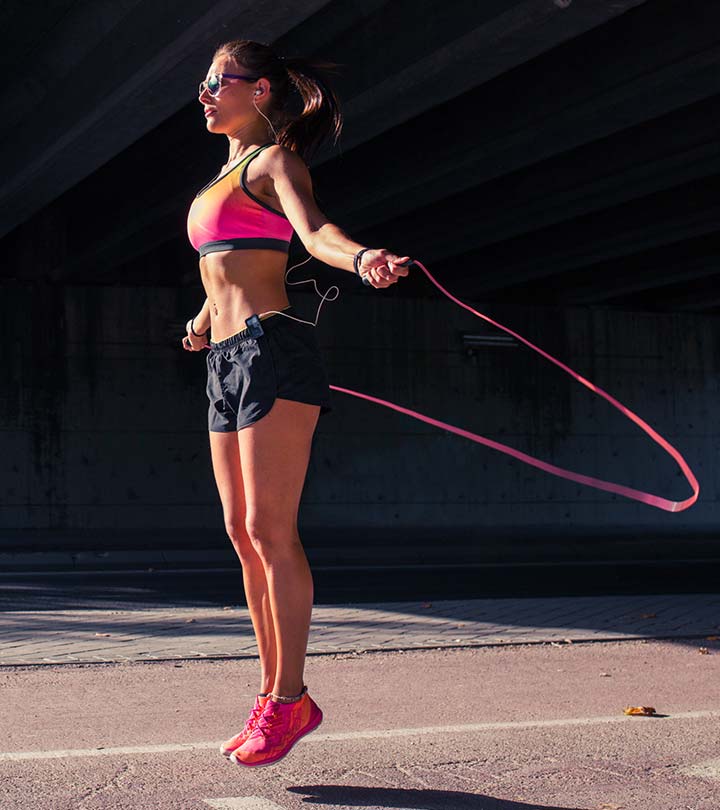Whether you’re a seasoned gym-goer or someone who has recently realized the importance of staying active, exercise bikes have become a popular choice for an effective and convenient workout. But what about the older age group? Is it safe and beneficial for them to hop on those two-wheeled machines? Today, we will explore the benefits and considerations of using exercise bikes for the older age group, shedding light on how these fitness tools can help maintain and improve their health and well-being. So, if you’re an older adult looking for an enjoyable way to stay fit or a concerned loved one, keep reading to discover the wonders of exercise bikes for the older age group. Yes, exercise bikes can definitely be used by the older age group. In fact, they are a great option for older adults who want to stay active and maintain their fitness levels. Exercise bikes offer a low-impact form of exercise that provides numerous benefits for older adults, both physically and mentally. Let’s take a closer look at some of the key advantages of exercise bikes for older adults.
Table of Contents
ToggleLow-impact exercise
One of the main benefits of exercise bikes for older adults is that they provide a low-impact form of exercise. This means that the risk of strain or injury to the joints is significantly reduced compared to high-impact exercises such as running or jumping. The smooth pedaling motion of an exercise bike helps to protect the joints, making it a suitable choice for individuals with arthritis or other joint conditions.
Improvement in cardiovascular health
Regular exercise using an exercise bike can greatly improve cardiovascular health for older adults. By increasing the heart rate, exercise bikes help to strengthen the heart muscle and improve blood circulation throughout the body. This can lead to a reduced risk of heart disease, lower blood pressure, and improved overall cardiovascular fitness.
Joint and muscle strength
Using an exercise bike can also help older adults to improve joint and muscle strength. The resistance provided by the bike pedals helps to strengthen the muscles in the legs, including the quadriceps, hamstrings, and calves. This increased muscle strength can lead to improved stability and balance, reducing the risk of falls and injuries.
Weight management
Exercise bikes are a great tool for older adults who want to manage their weight. Regular exercise on an exercise bike helps to burn calories and fat, contributing to weight loss or weight maintenance goals. Combined with a healthy diet, exercise bikes can be an effective way for older adults to achieve and maintain a healthy weight.
Bone density improvement
Maintaining bone density is crucial for older adults, as it helps to reduce the risk of osteoporosis and fractures. Riding an exercise bike can help to improve bone density, especially in the lower body. The repetitive impact-free motion stimulates bone growth, making it an excellent choice for older adults looking to improve their bone health.
While exercise bikes offer numerous benefits for older adults, there are some important considerations to keep in mind before starting a workout routine. It is always recommended to consult with a healthcare professional before starting any new exercise program, especially if you have any pre-existing medical conditions or concerns.
Consultation with a healthcare professional
Before starting any exercise routine, it is essential for older adults to consult with a healthcare professional, such as a doctor or a physical therapist. They can assess your overall health and provide guidance on the appropriate exercise intensity and duration for your specific needs. They can also help identify any potential risks or contraindications that may need to be addressed.
Adjusting the bike settings
When using an exercise bike, it is important to adjust the bike settings to ensure a comfortable and safe workout. Adjustments such as seat height, handlebar position, and pedal straps can help to optimize your posture and reduce unnecessary strain on the joints. Taking a few minutes to correctly set up your bike before each workout can greatly enhance your exercise experience.
Proper warm-up and cool-down
Regardless of age, it is crucial to warm up before starting any exercise routine. Older adults should spend a few minutes engaging in light cardio exercises, such as marching in place or gentle cycling, to prepare the body for the workout. Similarly, it is important to cool down after exercising on an exercise bike to gradually bring the heart rate back to normal and prevent any dizziness or lightheadedness.
Monitoring heart rate
Older adults should pay attention to their heart rate while exercising on an exercise bike. It is recommended to stay within a target heart rate range that is appropriate for your age and fitness level. This can be determined with the help of a healthcare professional. Monitoring your heart rate can help you gauge the intensity of your workout and ensure that you are exercising within a safe and effective range.
Using appropriate resistance levels
It is important for older adults to choose the right resistance level on an exercise bike. Starting with a lower resistance and gradually increasing it as your fitness improves will help to avoid unnecessary strain on the muscles and joints. The resistance level should challenge you, but still allow for a comfortable and controlled pedaling motion.
When it comes to exercise bikes suitable for older adults, there are several different types to choose from. Each type offers unique features and benefits, so it’s important to consider your individual preferences and needs.
Upright exercise bikes
Upright exercise bikes are the most commonly used type of exercise bike. They closely resemble traditional outdoor bikes, with a seat positioned directly above the pedals and handlebars for support. Upright bikes provide a more intense workout than recumbent bikes, as they engage more muscles and require more core stability. They are a great option for older adults who are looking for a challenging cardiovascular workout.
Recumbent exercise bikes
Recumbent exercise bikes are designed with a reclined seat and a backrest for added support and comfort. This makes them an excellent choice for older adults who have back or joint issues, as they provide a more relaxed and ergonomic riding position. Recumbent bikes are gentler on the joints and lower back, as they distribute the weight of the body more evenly. They are also easier to mount and dismount, making them a safer option for individuals with mobility limitations.
Dual-action exercise bikes
Dual-action exercise bikes, also known as cross-training bikes, are designed to simultaneously work both the upper and lower body. These bikes feature moveable handlebars that require you to engage your arms and shoulders while pedaling. This type of exercise bike provides a total body workout, making it a great option for older adults who want to improve both cardiovascular fitness and upper body strength.
Indoor cycling bikes
Indoor cycling bikes, also known as spin bikes, are designed to simulate the experience of outdoor cycling. They typically have a heavier flywheel, which provides a more realistic riding feel. Indoor cycling bikes are a popular choice for older adults who enjoy high-intensity interval training and want to participate in virtual cycling classes. However, they may not be suitable for individuals with joint or balance issues, as they require more stability and can put strain on the knees and hips.
While exercise bikes are generally safe for older adults, it is important to take some safety precautions to prevent any accidents or injuries.
Stability and balance
For older adults, maintaining stability and balance on an exercise bike is crucial to prevent falls or accidents. Make sure the exercise bike is on a stable surface and use caution when mounting and dismounting. Holding onto the handlebars for support as needed can also help to improve balance and stability while riding.
Securing the feet
Proper foot placement is important to ensure a safe and efficient workout on an exercise bike. Ensure that your feet are securely strapped into the pedal straps or attached to the pedals with appropriate shoes. This will prevent your feet from slipping off the pedals during the workout, reducing the risk of injury.
Proper posture and positioning
Maintaining proper posture and positioning on the exercise bike is important to prevent strain on the neck, back, and joints. Sit upright with your shoulders relaxed and your core engaged. Avoid leaning forward or slouching, as this can put unnecessary strain on the lower back. Adjust the seat and handlebars to find a comfortable position that allows for proper alignment and minimizes strain on the body.
Avoiding excessive strain and overexertion
While exercise is important for overall health, it is crucial for older adults to avoid excessive strain and overexertion. Listen to your body and take breaks as needed. Pay attention to any signs of excessive fatigue, dizziness, or shortness of breath, and adjust the intensity of your workout accordingly. It’s always better to start slow and gradually increase the intensity over time.
Regular maintenance and safety checks
To ensure safety while using an exercise bike, it is important to regularly inspect and maintain the equipment. Check the bike for any loose parts, such as pedals or bolts, and tighten them if necessary. Pay attention to any unusual noises, such as squeaking or grinding, as this may indicate a need for maintenance or repair. Regularly lubricate the bike chain and clean the bike to prevent any build-up that could affect the bike’s performance.
Exercise bikes offer a wide range of benefits for older adults, not only in terms of physical health but also mental well-being.
Improved mood and mental well-being
Regular exercise on an exercise bike has been shown to improve mood and mental well-being for older adults. Physical activity stimulates the release of endorphins, which are known as “feel-good” hormones. This can help to reduce symptoms of depression and anxiety, and promote a positive mindset and overall well-being.
Increased energy levels
Engaging in regular exercise on an exercise bike can help to boost energy levels for older adults. Physical activity increases blood flow and oxygen delivery to the muscles, providing a natural energy boost. Regular exercise can also enhance sleep quality, which in turn helps to improve energy levels during the day.
Reduced risk of chronic diseases
Regular exercise on an exercise bike can significantly reduce the risk of chronic diseases for older adults. Physical activity helps to improve cardiovascular health, lower blood pressure, and improve blood sugar control. This can reduce the risk of conditions such as heart disease, type 2 diabetes, and stroke. Exercise also helps to improve cholesterol levels, strengthen the immune system, and promote overall longevity.
Enhanced cognitive function
Exercise has been shown to have positive effects on cognitive function and brain health. Riding an exercise bike can help to improve memory, concentration, and overall cognitive function for older adults. Physical activity increases blood flow to the brain, which promotes the growth of new neurons and enhances brain function.
Better sleep quality
Exercise bikes can also contribute to better sleep quality for older adults. Regular physical activity helps to regulate sleep patterns and improve sleep quality. Older adults who engage in regular exercise on an exercise bike often experience improved sleep duration and quality, leading to better overall rest and rejuvenation.
To get the most out of exercise bikes, here are some helpful tips for older adults:
Start slow and gradually increase intensity
When starting an exercise routine on an exercise bike, it’s important for older adults to start slow and gradually increase intensity. Begin with shorter workout sessions at a low intensity, and gradually increase both the duration and intensity over time. This will allow your body to gradually adapt to the exercise and prevent any excessive strain or overexertion.
Incorporate variety in workouts
To keep your exercise routine engaging and enjoyable, incorporate variety into your workouts. Mix up the intensity, resistance levels, and cycling modes on the exercise bike. Try different workout programs or virtual cycling classes to challenge yourself and keep your workouts interesting. This will help to prevent boredom and make your exercise routine more sustainable in the long run.
Set specific goals and track progress
Setting specific goals can help to keep you motivated and focused during your exercise bike workouts. Whether it’s increasing your workout duration, reaching a certain resistance level, or achieving a specific distance, having clear goals can provide a sense of purpose and accomplishment. Track your progress regularly, whether it’s through a built-in console on the bike or using a fitness app or journal. This will help you stay accountable and celebrate your milestones along the way.
Listen to your body and rest when needed
While it’s important to stay consistent with your exercise routine, it’s equally important to listen to your body and rest when needed. Pay attention to any signs of excessive fatigue, muscle soreness, or joint discomfort. Taking rest days or reducing the intensity of your workouts when necessary will allow your body to recover and prevent overuse injuries.
Make exercise enjoyable and sustainable
To ensure long-term adherence to your exercise routine, make it enjoyable and sustainable. Find ways to make your workouts fun, whether it’s listening to your favorite music, watching a movie or TV show, or exercising with a friend or family member. Choose a comfortable and inviting space for your exercise bike workouts, with good lighting and ventilation. Making exercise a positive and enjoyable part of your daily routine will greatly increase the chances of sticking to it.
When looking for an exercise bike, there are several important features to consider:
Comfortable seat and back support
When using an exercise bike for longer durations, having a comfortable seat and back support is essential. Look for an exercise bike with a padded seat that provides adequate cushioning. Some bikes also offer adjustable seat positions and backrests, allowing you to find a position that is comfortable for your body.
Adjustable resistance levels
Having adjustable resistance levels on an exercise bike is important to cater to different fitness levels and goals. Look for a bike that offers a range of resistance options, from low to high. This will allow you to gradually increase the intensity of your workouts as your fitness improves, and ensure that the bike can continue to challenge you as you progress.
Easy-to-use console and display
An easy-to-use console and display can greatly enhance your exercise experience on an exercise bike. Look for a bike with a user-friendly console that displays important information such as speed, distance, time, and calories burned. Make sure the console is well-lit and easy to read, with large buttons and a clear display. Some bikes even offer built-in workout programs or connectivity features to enhance your workout variety.
Safety features like seat belts and handrails
For older adults, safety features on an exercise bike are particularly important. Look for a bike that offers safety features such as seat belts or straps to secure your body and prevent any accidents or falls. Handrails or handlebars on the bike can provide additional support and stability while riding, especially for individuals with balance or mobility concerns.
Built-in programs and tracking options
Some exercise bikes offer built-in workout programs or tracking options that can help to enhance your exercise experience. Look for a bike with pre-set programs that offer a variety of workout options, such as interval training or hill climbing. These programs can provide guidance and structure to your workouts, making them more effective and enjoyable. Bikes with tracking options allow you to monitor your progress over time, helping to keep you motivated and on track towards your fitness goals.
In addition to regular workouts on the exercise bike, older adults can also incorporate specific exercises and workouts to target different fitness goals.
Interval training
Interval training involves alternating between periods of high-intensity exercise and recovery. This type of workout can be easily incorporated into an exercise bike routine. For example, you can alternate between 1-2 minutes of high-intensity pedaling and 1-2 minutes of lower intensity recovery pedaling. Interval training helps to improve cardiovascular fitness, burn calories, and boost metabolism.
Endurance rides
Endurance rides involve longer duration workouts at a moderate intensity. During an endurance ride on an exercise bike, aim to maintain a steady pace for an extended period of time, such as 30 minutes or more. This type of workout helps to improve cardiovascular endurance and stamina.
Strength-building workouts
To improve muscle strength and tone, incorporate strength-building workouts on the exercise bike. Increase the resistance level or pedal at a higher intensity to engage the muscles in the legs, glutes, and core. Alternate between seated pedaling and standing pedaling to target different muscle groups. Strength-building workouts help to improve muscle strength, increase metabolism, and enhance overall body composition.
Cycling with hand weights
For an added challenge and to target the upper body, consider incorporating hand weights into your exercise bike routine. Hold light dumbbells or resistance bands while pedaling to engage the muscles in the arms, shoulders, and back. This can help to improve upper body strength and provide a full-body workout.
Virtual cycling classes
Virtual cycling classes are a great way to stay motivated and enjoy the benefits of group exercise from the comfort of your own home. Many exercise bike manufacturers offer access to virtual cycling classes, which are led by professional instructors and offer a variety of workout options. These classes often incorporate different types of workouts, such as high-intensity intervals or hill climbs, and can be tailored to different fitness levels.
While exercise bikes offer numerous benefits for older adults, they may not be the right choice for everyone. There are several alternative forms of exercise that can provide similar benefits to older adults.
Walking or hiking
Walking or hiking is a low-impact form of exercise that can be easily incorporated into the daily routine of older adults. Walking can help to improve cardiovascular health, strengthen muscles and bones, and enhance mood and mental well-being. It can be done outdoors or on a treadmill, depending on individual preferences and accessibility.
Water aerobics
Water aerobics is a great low-impact exercise option for older adults. Exercising in water provides resistance to the muscles without putting strain on the joints. Water aerobics classes often incorporate a variety of movements to target different muscle groups and improve cardiovascular fitness.
Tai chi or yoga
Tai chi and yoga are gentle forms of exercise that can provide numerous benefits for older adults. These practices help to improve balance, flexibility, and strength. Tai chi and yoga also promote relaxation and stress reduction, making them excellent choices for older adults looking for a holistic approach to wellness.
Elliptical trainers
Elliptical trainers are another low-impact option for older adults who want to engage in cardiovascular exercise. These machines simulate the motion of walking or running without the impact on the joints. Elliptical trainers provide a full-body workout, engaging both the upper and lower body muscles.
Dancing
Dancing is a fun and enjoyable form of exercise that can be adapted to suit different fitness levels and preferences. Whether it’s taking a dance class, following dance routines online, or simply dancing around the house, this activity helps to improve cardiovascular health, coordination, and balance. Dancing also provides mental stimulation and social interaction, making it a great choice for older adults looking to stay active and engaged.
Exercise bikes have proven to be a valuable tool for older adults in improving physical and mental health. Many success stories highlight the positive impact that exercise bikes have had on the lives of older adults.
Improved mobility and independence
Regular use of an exercise bike can greatly improve mobility and independence for older adults. The low-impact nature of cycling helps to maintain joint flexibility and range of motion, making everyday activities easier and reducing the risk of mobility limitations. Improved cardiovascular fitness and muscle strength also contribute to better overall mobility and independence.
Weight loss and body transformation
Exercise bikes can be an effective tool for weight loss and body transformation for older adults. Regular exercise on an exercise bike, combined with a healthy diet, can contribute to gradual and sustainable weight loss. Many older adults have successfully used exercise bikes as part of their weight loss journey, achieving significant improvements in their body composition and overall health.
Increased strength and stamina
Exercise bikes help to improve muscle strength and stamina for older adults. Regular exercise on an exercise bike helps to strengthen the leg muscles, providing greater stamina and endurance. As a result, older adults experience increased strength and are able to perform daily activities with more ease and confidence.
Enhanced overall well-being
Using an exercise bike can have a positive impact on overall well-being for older adults. Regular exercise releases endorphins, which are natural mood-boosters. This can lead to improved mental well-being, reduced stress levels, and enhanced overall quality of life. Older adults who incorporate exercise bikes into their routine often report feeling happier, more energetic, and more engaged in daily activities.
Socialization and community engagement
Exercise bikes can also provide opportunities for socialization and community engagement. Many fitness centers and community centers offer group cycling classes or indoor cycling programs specifically designed for older adults. Participating in these classes allows older adults to connect with like-minded individuals, make new friends, and enjoy the sense of community that comes with exercising together.
In conclusion, exercise bikes are a great option for older adults who want to stay active and improve their physical and mental health. They offer a low-impact form of exercise that provides numerous benefits, including improved cardiovascular health, joint and muscle strength, weight management, and bone density improvement. By following the considerations for older adults using exercise bikes and incorporating the tips and exercises mentioned, older adults can maximize the benefits of exercise bikes and enjoy a healthier and more active lifestyle.






